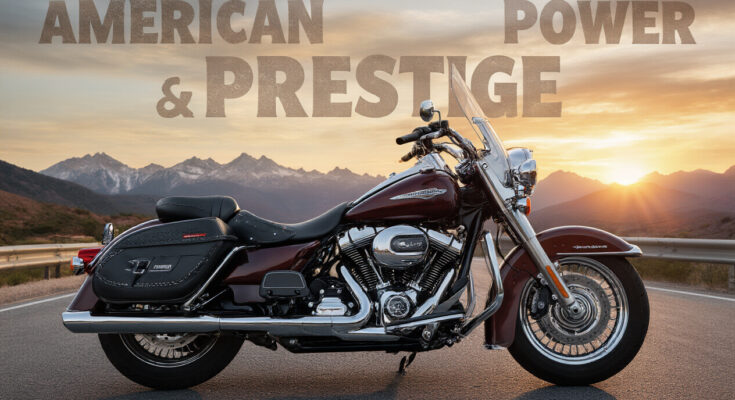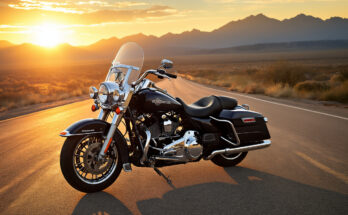Ever stood at a stoplight and heard that unmistakable rumble that makes your heart race? That’s American motorcycle royalty rolling up beside you.
You’re not alone. Over 32% of motorcycle enthusiasts rank American-made bikes as their dream ride, with Harley-Davidson dominating the USA’s favorite motorcycle conversation for nearly 120 years.
This isn’t just about transportation—it’s about freedom, identity, and raw mechanical power wrapped in chrome and steel. The iconic American motorcycle represents something deeper than transportation; it’s woven into our cultural fabric.
By the time you finish reading, you’ll understand why these machines command such fierce loyalty—and why the debate between American muscle and foreign precision isn’t ending anytime soon.
The Evolution of America’s Motorcycle Culture
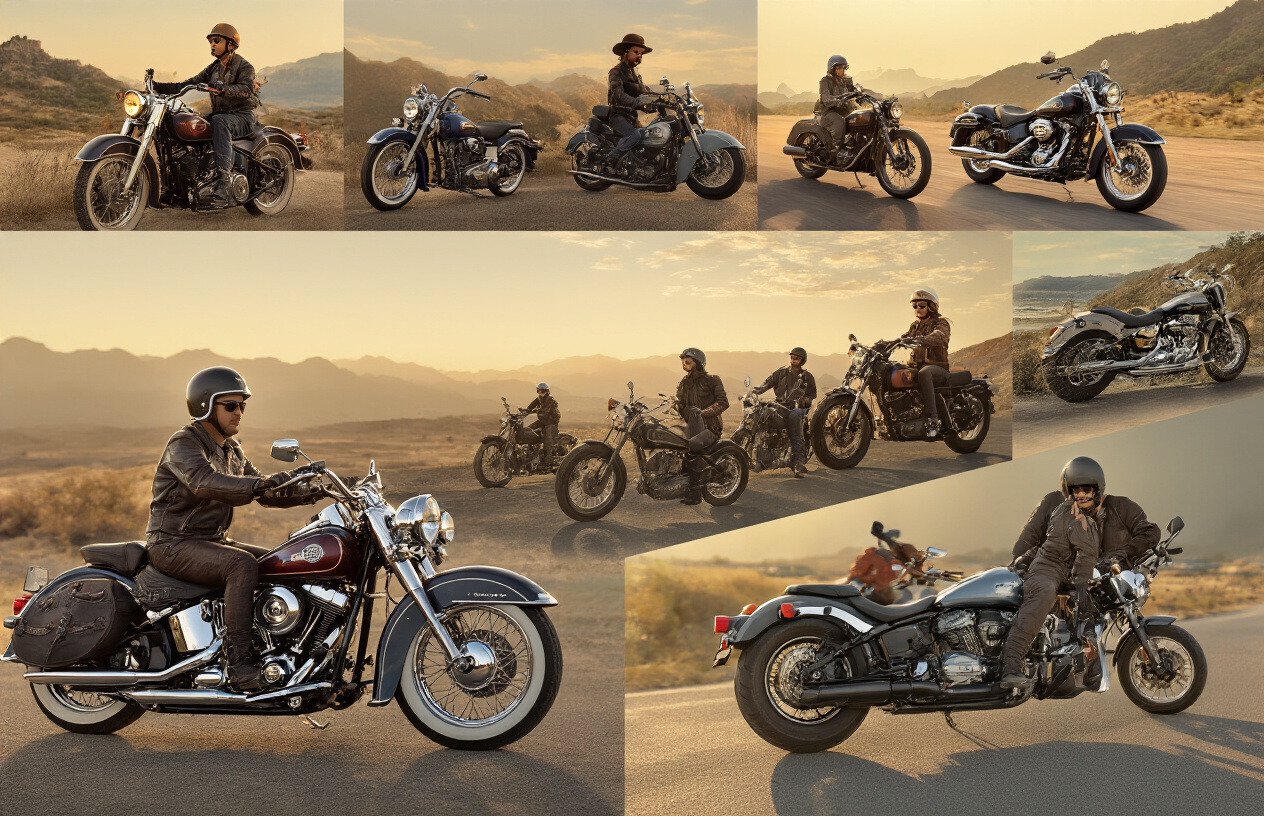
A. From Rebels to Mainstream: How Motorcycles Shaped American Identity
The motorcycle’s journey in America isn’t just about machines—it’s about who we are as a culture.
Back in the 1950s, if you rode a motorcycle, most folks thought you were trouble. The 1953 riot in Hollister, California (which inspired “The Wild One” with Marlon Brando) cemented this bad-boy image. Motorcycles meant leather jackets, rebellion, and thumbing your nose at convention.
But man, things change.
By the 1970s, motorcycles started showing up in driveways of doctors, lawyers, and business execs. What happened? The Japanese invasion happened—Honda specifically, with their brilliant “You meet the nicest people on a Honda” campaign. Suddenly, riding wasn’t just for outlaws.
The 80s and 90s saw the weekend warrior emerge—the accountant who becomes a rebel on Saturday afternoon. Motorcycles transformed into lifestyle accessories rather than just transportation.
Today? Motorcycles represent freedom across all walks of American life. The guy in the three-piece suit might be the same one rumbling through the mountains on Sunday. That transformation—from outcast symbol to mainstream passion—mirrors America’s own evolution from rigid conformity to personal expression.
B. Key Historical Milestones in US Motorcycle Development
1901: Indian Motorcycles rolls out their first bike. America enters the game.
1903: Harley-Davidson launches. Two guys in a shed create what would become an American icon.
WWII Era: The motorcycle proves its worth in combat. Harley produces over 90,000 motorcycles for military use.
1947: Hollister Rally—and the birth of the “outlaw biker” image.
1969: Easy Rider hits theaters. Peter Fonda and Dennis Hopper immortalize the connection between motorcycles and American freedom.
1970s: Japanese manufacturers flood the American market. Honda, Kawasaki, Yamaha change the game with reliable, affordable bikes.
1983: Harley-Davidson nearly goes bankrupt, then stages one of the most remarkable comebacks in American business history.
1990s: The cruiser boom. Everyone wants to make American-style motorcycles.
2000s: Technology revolution. Fuel injection, ABS, and riding modes make American motorcycles more sophisticated than ever.
2009: The recession hits motorcycle sales hard, forcing innovation.
2020s: Electric motorcycles emerge as the potential future, with companies like Zero and even Harley (with their LiveWire) betting on battery power.
C. How American Motorcycle Brands Conquered the Market
American motorcycle manufacturers didn’t just build bikes—they built mythology.
Harley-Davidson became the ultimate success story not because they always made the best motorcycles (they didn’t), but because they understood something crucial: Americans don’t just buy products, they buy stories.
When Japanese motorcycles threatened to obliterate American brands in the 1970s and 80s with superior technology and reliability, Harley doubled down on heritage, experience, and community. They sold belonging, not just transportation.
Indian Motorcycles followed a different path. After multiple resurrections and failures, the brand finally found stable footing under Polaris in 2011. Their approach? Embrace the history while delivering modern performance.
Victory Motorcycles (1998-2017) tried creating an American alternative to Harley but ultimately couldn’t sustain the momentum.
What set American brands apart was their marketing genius. While Japanese manufacturers sold specifications, American companies sold lifestyle. They created rallies, owner groups, and branded merchandise that turned customers into evangelists.
The formula worked brilliantly: build decent motorcycles, wrap them in irresistible storytelling, and foster tribal belonging. Even when foreign motorcycles objectively outperformed them, American brands maintained cultural dominance through emotional connection.
D. The Enduring Legacy of Iconic American Motorcycles
Some motorcycles transcend being mere machines. They become cultural landmarks.
The 1936 Harley-Davidson Knucklehead didn’t just introduce the first overhead valve engine in a production Harley—it defined what an American motorcycle should look like for generations. Those teardrop gas tanks and hardtail frames established a visual language that persists today.
The 1947 Indian Chief with its skirted fenders represents another distinctly American silhouette. You see one, you know immediately what it is.
The Harley-Davidson Sportster, introduced in 1957, remains in production over 65 years later. It’s America’s longest continuously produced motorcycle model.
Then there’s the chopper phenomenon—purely American. After returning from WWII, veterans modified their military surplus bikes, creating the stretched-out, minimalist customs that would later inspire the Captain America bike in Easy Rider.
These motorcycles endure because they’re more than transportation—they’re cultural artifacts. They represent American ideals: independence, craftsmanship, rebellion, and reinvention.
Even as the motorcycle industry evolves toward electrification and high technology, these icons maintain their power. New Indian Scouts and Harley Softails deliberately echo their ancestors while incorporating modern engineering.
That’s the genius of American motorcycle culture—it constantly moves forward while never forgetting where it came from.
Power That Defines the American Ride
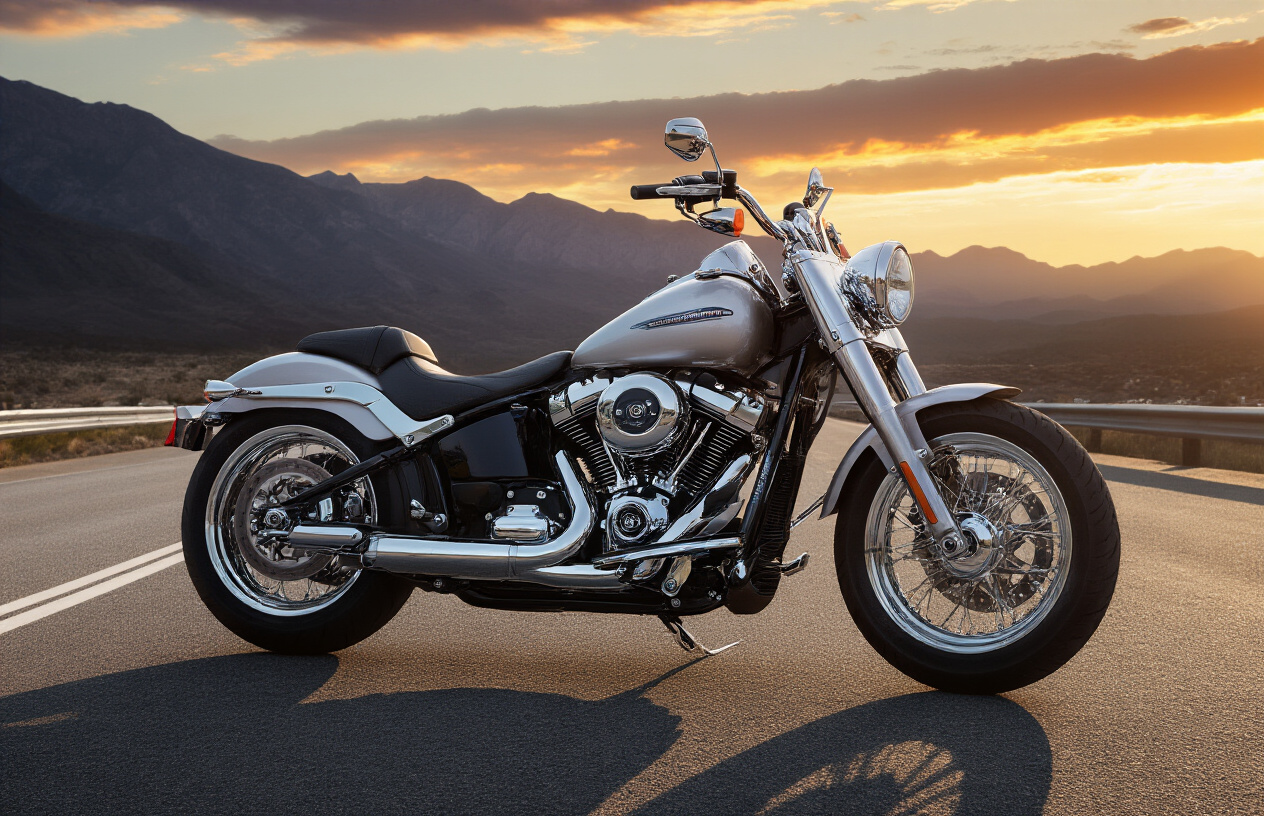
Engine Innovations That Set US Bikes Apart
American motorcycles have always been about more than just transportation. They’re rolling statements of mechanical excellence. US manufacturers didn’t just build engines—they created legends.
Look at what makes American engines different: massive V-twins with displaced volumes that European bikes wouldn’t dare attempt. While Japanese and European brands chased higher RPMs, American engineers focused on building torque monsters that pull hard from idle.
The push-rod revolution wasn’t abandoned here like elsewhere. Instead, it was perfected. These simpler valve trains create that distinctive mechanical pulse you feel between your legs. No overhead cams needed when raw character matters more.
Torque vs. Horsepower: What American Riders Prefer
American riders want to feel that instant punch when they roll on the throttle. They’re not revving to 14,000 RPM to find power—they want it now.
The numbers tell the story:
| Motorcycle Type | Torque Focus | Horsepower Focus |
|---|---|---|
| American Cruiser | ★★★★★ | ★★★☆☆ |
| European Sport | ★★★☆☆ | ★★★★★ |
| Japanese Standard | ★★★★☆ | ★★★★☆ |
That low-end grunt means American bikes pull away from stoplights with authority. No need to downshift for passing power when you’ve got mountains of torque on tap at any RPM.
Fuel Efficiency Meets Raw Power in Modern Designs
Who says you can’t have your cake and eat it too? Modern American motorcycles deliver brutal power while sipping fuel more efficiently than ever.
The secret sauce? Computer-controlled fuel injection systems that meter every drop of premium into precisely the right spot at exactly the right millisecond. Variable valve timing and cylinder deactivation technologies have transformed these beasts from gas guzzlers to reasonable companions for longer rides.
Today’s American power plants manage to maintain their muscular character while meeting emissions standards that would have seemed impossible twenty years ago. Engineering wizardry at its finest.
The Unmistakable Roar: Sound Engineering as a Brand Signature
You can hear an American motorcycle coming from blocks away. That’s no accident.
Sound engineers spend thousands of hours tuning exhaust notes to create that perfect rumble. They’re not just building engines—they’re composing mechanical symphonies. The potato-potato-potato idle isn’t a flaw; it’s a feature carefully preserved across generations.
Many manufacturers even hold patents on their distinctive sounds. When other companies tried to mimic that iconic American exhaust note, they found themselves facing legal challenges. That’s how seriously US brands take their acoustic signatures.
Comparing Engine Performance Across Top US Models
The battlefield of American motorcycle performance has never been more competitive:
| Model | Displacement | Torque | Horsepower | Notable Feature |
|---|---|---|---|---|
| Road King | 114ci (1868cc) | 118 ft-lb | 84 hp | Heritage-inspired pushrod V-twin |
| Indian Challenger | 108ci (1768cc) | 128 ft-lb | 122 hp | Liquid-cooled overhead cam design |
| Livewire | Electric | 86 ft-lb | 105 hp | Instant electric torque delivery |
Each manufacturer brings something unique to the table. Some embrace tradition with air-cooled designs, while others push forward with liquid cooling and overhead cams. The competition drives innovation while preserving what riders love about American motorcycles: their unmatched presence on the road.
Performance Features That Dominate the Road
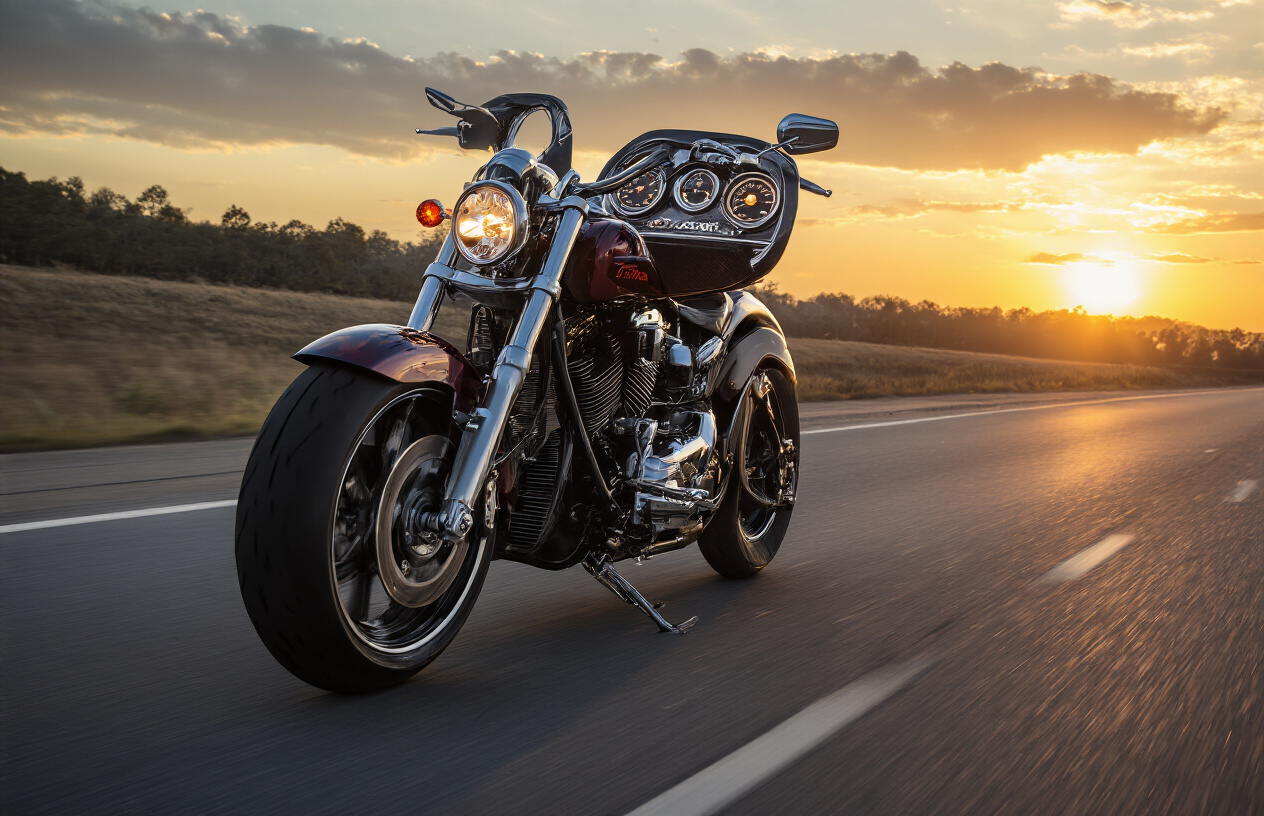
Handling Characteristics of America’s Favorite Motorcycles
American motorcycles aren’t just about looking good at stoplights. They’re built to handle like nothing else on the road.
Ever notice how a Harley leans into corners with that planted feeling? That’s no accident. The low center of gravity combined with that longer wheelbase gives you stability when you’re pushing through twisties.
But here’s the thing most riders miss: these bikes aren’t just straight-line cruisers anymore. The newer models from Indian and Victory have completely rewritten what American handling means. They’ve taken that classic stability and added quick turn-in response that used to be exclusively Japanese territory.
Take the latest Indian FTR – it flicks side to side like a bike half its weight while still giving you that solid American road feel.
Long-Distance Comfort: Why US Bikes Excel in Touring
Nobody – and I mean nobody – does touring like American motorcycles.
Those wide, plush seats aren’t just for show. Sit on a Road Glide for 8 hours and you’ll understand why iron butt riders swear by American touring machines.
The riding position keeps your back happy while the frame geometry absorbs road chatter before it hits your spine. That’s the secret sauce.
Plus, wind management on these bikes is ridiculous. The fairings on American tourers are basically windtunnel-tested living rooms. I rode through a storm on an Electra Glide last summer and barely felt a drop.
Off-Road Capabilities in Modern American Designs
American manufacturers have quietly become off-road monsters.
The new adventure platforms coming out of Milwaukee and elsewhere combine that torquey American power delivery with surprisingly capable suspension travel. They’re not just pretending to go off-road anymore.
I watched a guy on a Pan America tackle terrain that would make dedicated dirt bikes nervous. The combination of electronic suspension management and ground clearance makes these bikes shockingly capable when pavement ends.
Technology Integration That Enhances the Riding Experience
American bikes have gone from tech-resistant to tech-dominant almost overnight.
The infotainment systems on modern American motorcycles make your car look dated. Full smartphone integration, navigation that actually works with gloves, and rider modes that transform the bike’s character with a button press.
The radar-assisted cruise control on the latest touring models is straight-up magic on long highways. And don’t get me started on the customization options through the companion apps. You can literally change your bike’s performance characteristics while stopping for coffee.
The Prestige Factor: Why Americans Choose Domestic Brands
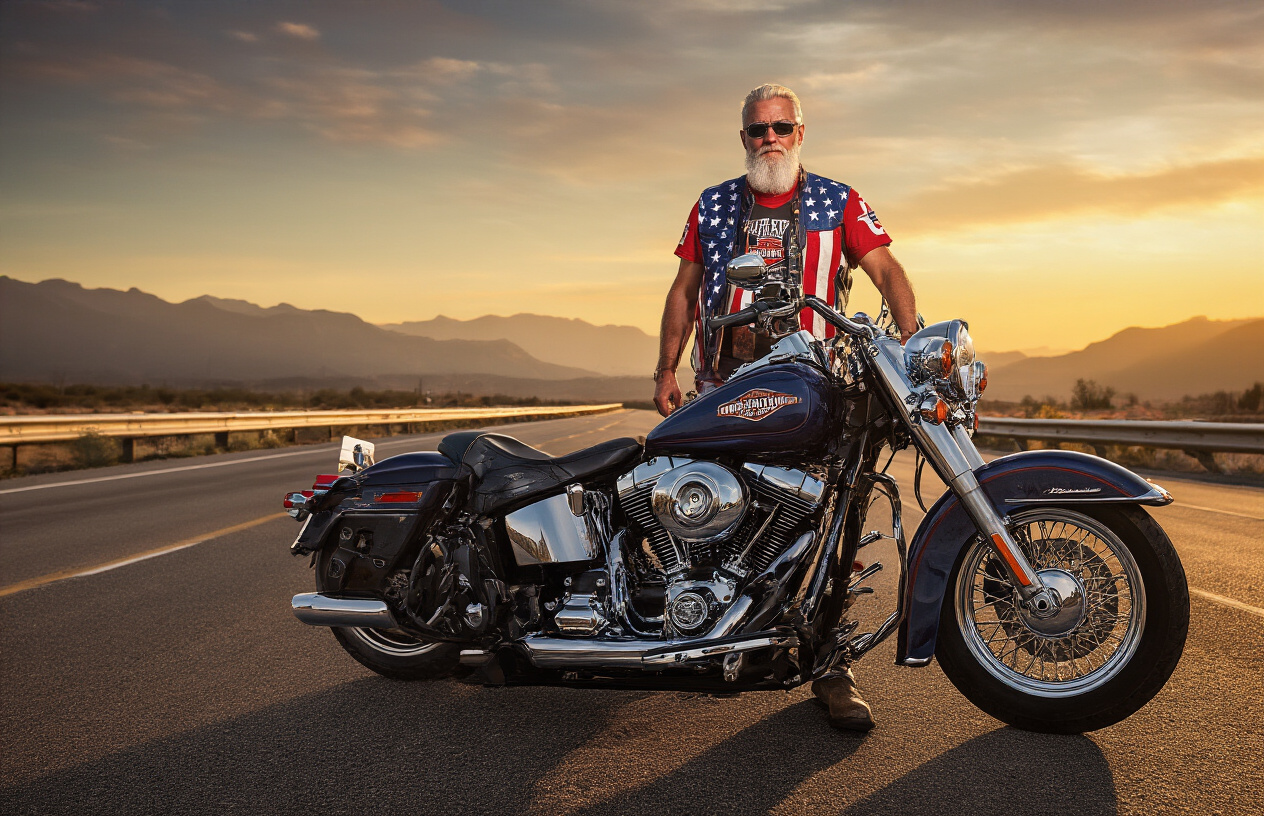
Brand Loyalty in the US Motorcycle Community
Ever noticed how some riders won’t shut up about their Harley? That’s brand loyalty on steroids.
American motorcyclists don’t just buy bikes – they join tribes. Harley-Davidson owners are the poster children for this phenomenon. They tattoo the logo on their bodies, for crying out loud. That’s commitment.
Indian Motorcycle riders aren’t far behind. They’ll talk your ear off about heritage and how their bike connects them to a century of American engineering. It’s not just transportation – it’s identity.
This loyalty runs deeper than just liking a product. It’s about belonging. When you buy American, you’re not just getting a motorcycle – you’re getting a community, rallies, group rides, and friendships that often last decades.
Price Points and Value Perception of American Motorcycles
American motorcycles aren’t cheap. Let’s get that out of the way.
A new Harley can set you back anywhere from $10,000 to north of $40,000. Indian motorcycles play in the same ballpark. But here’s the kicker – owners don’t see this as expensive. They see it as investment-grade value.
Why? Resale value, for one. American bikes hold their value like nobody’s business. That Softail you buy today might be worth 70% of what you paid for it five years down the road.
Then there’s the “cost per smile” factor. Owners justify the price tag because of the joy these machines bring. The rumble of a V-twin isn’t just noise – it’s emotional currency.
Celebrity Endorsements and Cultural Impact
American motorcycles are Hollywood darlings. Always have been.
When Norman Reedus rides a custom American chopper in “The Walking Dead,” sales spike. When Jason Momoa showcases his Harley collection on Instagram, dealerships feel it.
Movie history is packed with iconic American motorcycle moments. Easy Rider’s Captain America bike. Terminator 2’s Fat Boy scene. These images are burned into our collective consciousness.
Musicians love them too. Bruce Springsteen, Pink, and Kid Rock all wave the American motorcycle flag. Their influence can’t be overstated – when they ride American, fans follow suit.
Customization Culture and Personal Expression
No two American motorcycles look the same on the road. That’s by design.
The aftermarket parts industry for American bikes is massive – we’re talking billions of dollars. From chrome accessories to complete engine overhauls, the options are endless.
Custom builders have elevated American motorcycles to art. Guys like Arlen Ness and Jesse James transformed stock bikes into rolling sculptures that fetch six figures.
The customization culture isn’t just about looks – it’s deeply personal. Your bike becomes an extension of you. That thundering exhaust note? That’s your voice. The paint job? Your personality on display.
American motorcycles aren’t just vehicles. They’re blank canvases waiting for your personal touch.
The Competitive Landscape
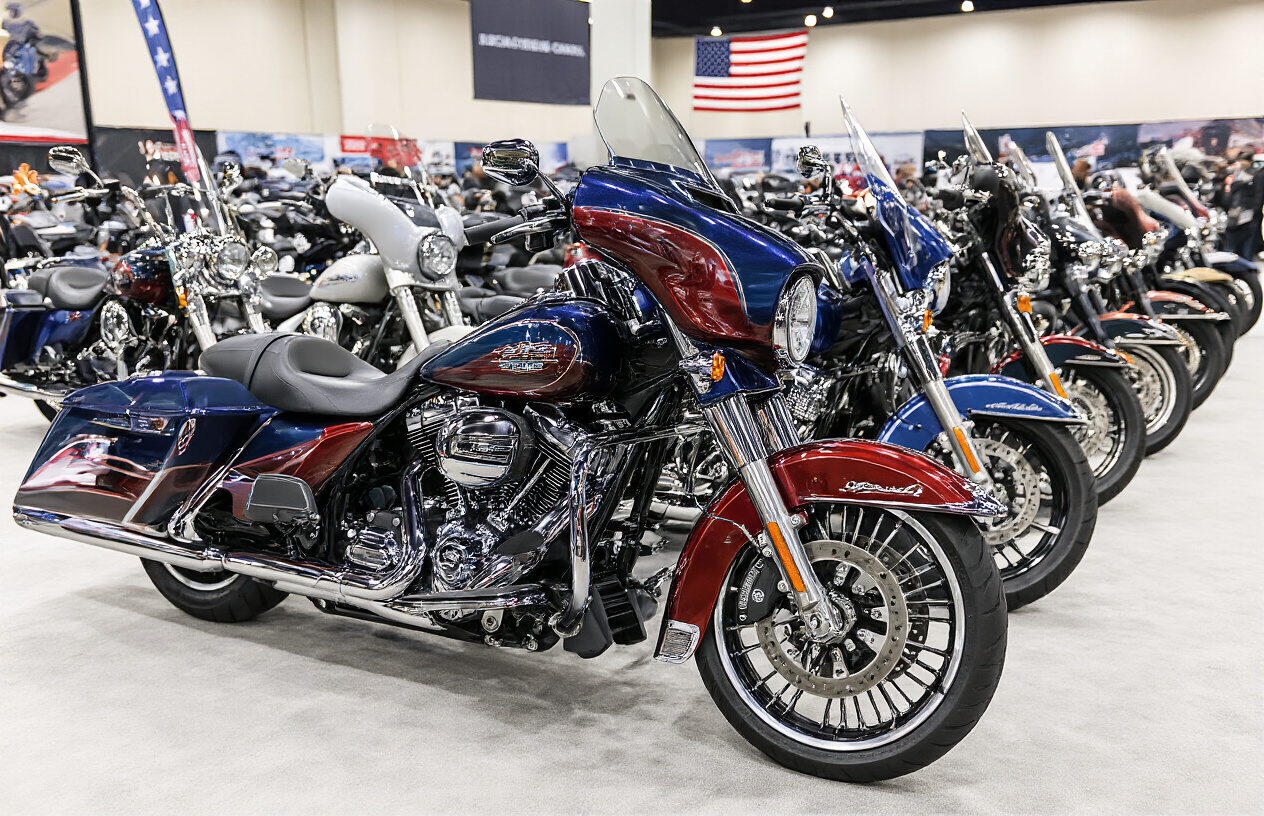
How American Brands Stack Up Against Foreign Competitors
The battle between American iron and overseas machines isn’t just about patriotism—it’s about distinct riding experiences. Harley-Davidson remains the undisputed king of American motorcycles, with Indian Motorcycle gaining serious ground since its revival under Polaris.
When pitted against Japanese brands like Honda, Yamaha, and Kawasaki, American motorcycles win on character but often lose on price-to-performance ratio. Japanese bikes typically offer more horsepower per dollar, while American cruisers deliver that unmistakable rumble and road presence.
European competitors like BMW, Ducati, and Triumph bring premium engineering and heritage, but American brands counter with raw attitude and customization potential that’s tough to match.
Market Share and Sales Trends in the US
The numbers tell an interesting story. While Japanese manufacturers dominate global sales volumes, Harley-Davidson still commands roughly 30% of the US heavyweight motorcycle market—pretty impressive for a single brand.
Recent trends show younger riders gravitating toward smaller, more affordable options from all manufacturers. Still, American brands have responded with models like the Indian Scout and Harley Street series.
Year-over-year sales have fluctuated, with American brands seeing modest declines offset by higher-margin limited editions and accessory sales:
| Brand Category | Market Share | 5-Year Trend |
|---|---|---|
| American | 38% | -3% |
| Japanese | 41% | +2% |
| European | 21% | +4% |
Demographics of the American Motorcycle Owner
The stereotype of the American motorcycle owner being a middle-aged white male isn’t completely wrong—but it’s becoming less accurate every year.
Today’s American motorcycle landscape is changing fast. The average Harley owner is still around 50 years old, but Indian and other American brands are successfully pulling in riders in their 30s and 40s.
Women riders now represent the fastest-growing demographic, increasing from just 10% of all riders a decade ago to nearly 20% today. American brands have noticed, designing bikes with adjustable ergonomics and lower seat heights.
Urban professionals are emerging as a key market segment, driving demand for American motorcycles that blend heritage with modern technology. These riders want the classic look but expect Bluetooth connectivity and rider assistance features.
Dealership Experience and Customer Service Advantages
Walk into an American motorcycle dealership and you’ll immediately notice the difference. These aren’t just retail locations—they’re community hubs.
American brand dealerships excel at creating lifestyle experiences. Most Harley and Indian dealerships host regular rides, barbecues, and technical workshops that foreign brands rarely match. This community-building translates to fierce brand loyalty.
Service departments at American dealerships typically offer loaner bikes, comfortable waiting areas, and technicians who understand the emotional connection riders have with their machines. Many have expanded to include cafés, apparel shops, and event spaces.
The personalization options at American dealerships run circles around what’s available from overseas competitors. You can literally build a one-of-a-kind motorcycle through the dealer, with factory warranty intact.
Future Innovations Keeping US Brands at the Forefront
American manufacturers aren’t resting on their chrome laurels. They’re pushing into new territories that might surprise you.
Electric motorcycles represent a major frontier, with Harley’s LiveWire leading the charge (pun intended). While traditional Harley fans were skeptical, the bike has carved out an impressive niche and demonstrates American brands can innovate beyond V-twins.
Advanced rider assistance systems are appearing on flagship American models, including radar-assisted cruise control, blind spot detection, and lean-sensitive ABS that rivals anything from Europe.
Connected motorcycle technology is another area where American brands are investing heavily. Their latest models feature smartphone integration, cloud diagnostics, and theft recovery systems that update automatically like your phone.
The future American motorcycle will likely balance timeless design with cutting-edge tech—heritage on the outside, innovation on the inside.
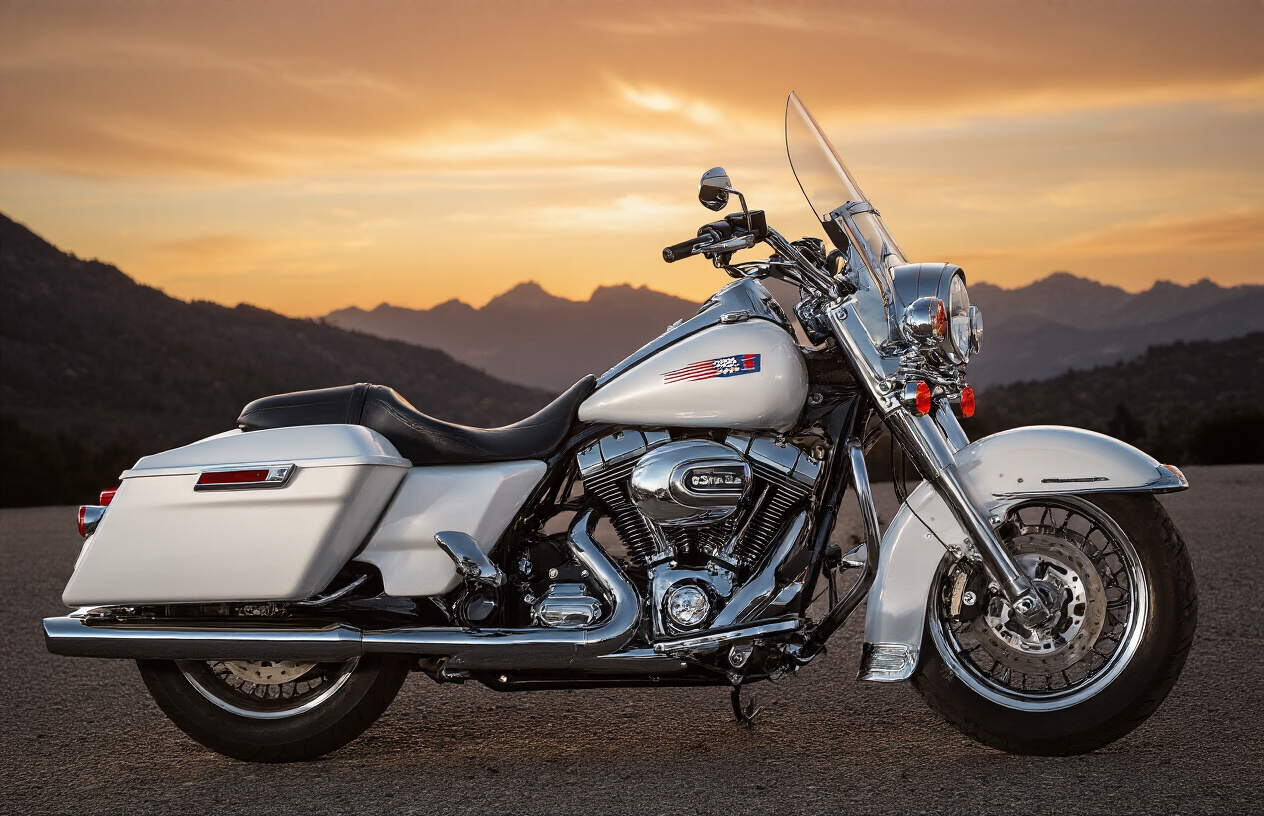
American motorcycle culture has come a long way, defined by powerful engines that deliver the thrill riders crave, performance capabilities that conquer diverse terrains, and the undeniable prestige that comes with owning a domestic brand. From city streets to open highways, these machines continue to dominate the road with their distinctive blend of engineering excellence and cultural significance.
As the competitive landscape evolves, American motorcycles maintain their special place in riders’ hearts through innovation while honoring tradition. Whether you’re an experienced rider or considering your first motorcycle purchase, the combination of power, performance, and prestige offered by American brands provides an authentic riding experience that simply can’t be replicated. The rumble of an American engine isn’t just a sound—it’s part of our national identity on two wheels.

